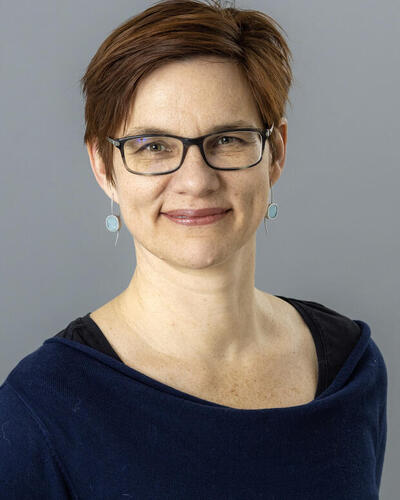Systems thinking and creative problem-solving
These joint interdisciplinary sessions will equip summer school participants with problem-solving methods that facilitate interdisciplinary collaboration with a strong focus on research impact.

Main content
Course leaders
Birgit Kopainsky, Professor in System Dynamics at the University of Bergen and the leader of the System Dynamics Group, UiB.
Ingunn Johanne Ness, Senior Researcher and Cluster Leader at the Centre for the Science of Learning & Technology (SLATE), UiB.
The purpose of these joint sessions is to equip all PhD candidates at BSRS with problem solving methods that facilitate interdisciplinary collaboration with a strong focus on research impact. This will be achieved by working concretely with challenge-driven innovation related to grand societal challenges, in teams consisting of PhD candidates with varied disciplinary backgrounds.
The interdisciplinary sessions combine theory and application:
- Theoretical part: systems thinking and creative problem-solving.
- Practical part: work in interdisciplinary teams using the methods for solving concrete societal challenges.
Learning outcomes
Express knowledge and understanding
- Participants have an overview of the most frequently used methods in systems thinking and creative problem-solving.
Apply knowledge and understanding
- Participants can apply those tools that are appropriate for the innovation challenge.
- Participants can identify appropriate boundaries for the challenge.
Communicate
- Participants can adopt a problem owner’s perspective to effectively summarise the challenge, describe the methods for solving that challenge and the implications of the proposed solutions.
Learning skills
- Participants are able to organise efficient and effective communication within interdisciplinary teams
- Participants are able to engage in the co-creation process

Literature list
Sustainable development and innovation
- Leach, M., Rockström, J., Raskin, P., Scoones, I., Stirling, A. C., Smith, A., . . . Olsson, P. (2012). Transforming innovation for sustainability. Ecology and Society, 17(2). doi: 10.5751/ES-04933-170211
- van den Bergh, J. C. J. M., van Leeuwen, E. S., Oosterhuis, F. H., Rietveld, P., & Verhoef, E. T. (2007). Social learning by doing in sustainable transport innovations: Ex-post analysis of common factors behind successes and failures. Research Policy, 36(2), 247-259. https://doi.org/10.1016/j.respol.2006.11.001
Systems thinking and participatory systems mapping
- Allender, S., Owen, B., Kuhlberg, J., Lowe, J., Nagorcka-Smith, P., Whelan, J., & Bell, C. (2015). A community based systems diagram of obesity causes. PLOS ONE, 10(7), e0129683. doi: 10.1371/journal.pone.0129683
- Hovmand, P. S., Andersen, D. F., Rouwette, E. A. J. A., Richardson, G. P., Rux, K., & Calhoun, A. (2012). Group model-building ‘Scripts’ as a collaborative planning tool. Systems Research and Behavioral Science, 29(2), 179-193. doi: 10.1002/sres.2105
- Videira N., Antunes P., Santos R. (2017) Engaging Stakeholders in Environmental and Sustainability Decisions with Participatory System Dynamics Modeling. In: Gray S., Paolisso M., Jordan R., Gray S. (eds) Environmental Modeling with Stakeholders. Springer, Cham
Creative problem solving
- Brown, T. (2009). Change by Design: How Design Thinking Transforms Organizations and Inspires Innovation.
- Ness, I. J., & Søreide, G. E. (2014). The Room of Opportunity: Understanding phases of creative knowledge processes in innovation. Journal of Workplace Learning, 26(8), 545-560. http://dx.doi.org/10.1108/JWL-10-2013-0077
- Ness, I. J., & Riese, H. (2015). Openness, curiosity and respect: Underlying conditions for developing innovative knowledge and ideas between disciplines. Learning, Culture and Social Interaction, 6 (September 2015), 29-39. http://dx.doi.org/10.1016/j.lcsi.2015.03.001
- Ness, I. J. (2017). Polyphonic Orchestration: Understanding how leaders facilitate creative knowledge processes in interdisciplinary groups working with innovation. European Journal of Innovation Management.
- Sawyer, R. K., & DeZutter, S. (2009). Distributed creativity: How collective creations emerge from collaboration. Psychology of Aesthetics, Creativity, and the Arts, 3(2), 81-92.
Credits
Participation at the BSRS is credited under the European Credit Transfer System (ECTS). Participants submitting an essay, in a form of a publishable manuscript of 10-20 pages, after the end of the summer school will receive 10 ECTS. Deadline for submission will be decided by your course leader.
It is also possible to participate without producing an essay. This will give you 5 ECTS. In order to receive credits, we expect full participation in the course-specific modules, plenary events and roundtables.
Course leaders
Birgit Kopainsky is professor in System Dynamics at the University of Bergen and the leader of the System Dynamics Group. She holds a PhD in agricultural economics and a master’s degree in Geography and Environmental Studies. Her research explores the role that system dynamics can play in facilitating transformation processes in social-ecological systems such as the transformation towards sustainable and resilient agri-food systems. She conducts and supervises research both in Europe and in developing countries.
Ingunn Johanne Ness is a senior researcher and Cluster Leader at the Centre for the Science of Learning & Technology (SLATE). She has a PhD from the University of Bergen and a postdoc from SLATE. Ness leads the innovative research futures efforts in SLATE and carries out research on interdisciplinary collaboration, innovation, creativity, and leadership. Ness has a particular interest for the sociocultural approach and works with the world’s leading environments on sociocultural theory, the OSAT group at the University of Oxford and Webster Center for Creativity and Innovation. In addition, Ness collaborates with businesses, such as Equinor.

